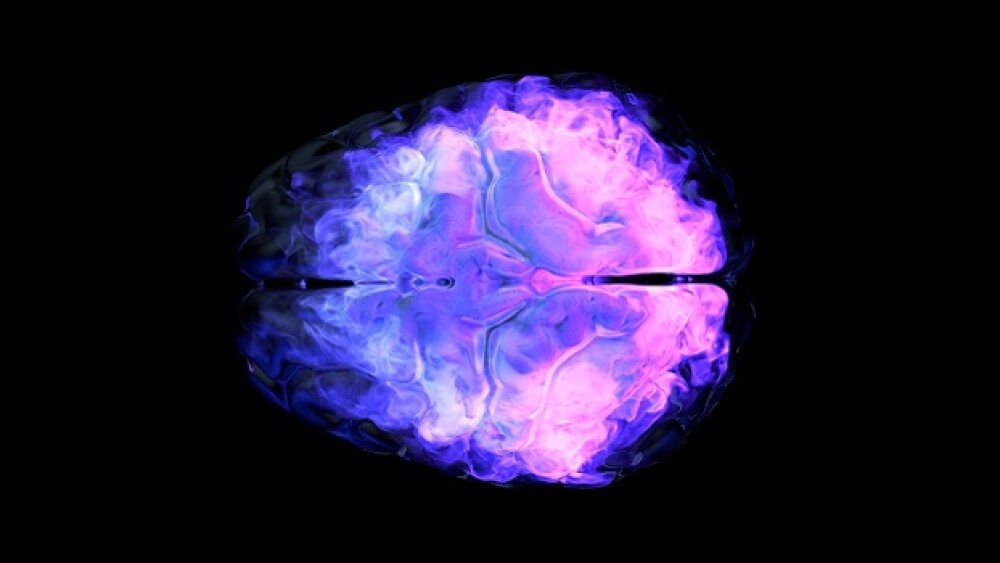While sensitive and specific biomarkers for Alzheimer’s disease have recently taken a leap forward, the Parkinson’s space has lagged behind. Neurofilament Light Chain could change that.
Pictured: a neurosurgeon analyzes an MRI/iStock, gorodenkoff
Studies point to the importance of biomarker discovery for neurodegenerative disorders to help predict disease presence, progression and treatment response. The Alzheimer’s field has seen significant progress in identifying sensitive and specific biomarkers, such as beta-amyloid and total and phosphorylated tau, but supportive and surrogate biomarkers for Parkinson’s disease have remained more elusive.
While imaging diagnostics for the dopamine transporter (DaTscan) and the recently developed alpha-synuclein seed amplification assay (αSyn-SAA)—which determines whether aggregated alpha-synuclein is present in cerebrospinal fluid (CSF)—can contribute to the diagnosis of Parkinson’s, they are not suitable for measuring progression and treatment response.
Prominent research institutions and organizations such as the Michael J. Fox Foundation have been working hard to identify evaluative and reliable biomarkers for Parkinson’s, and several candidates are emerging from this effort. One such biomarker—neurofilament light chain (NfL), a structural neuronal protein that is released into the CSF and the bloodstream when nerve cells are damaged—has recently begun to receive attention in the neurodegeneration field as a whole. For example, the FDA recently granted accelerated approval to Biogen’s Qalsody (tofersen) for the treatment of a rare form of amyotrophic lateral sclerosis involving mutations in the superoxide dismutase 1 (SOD-1) enzyme, based on the drug’s capability to reduce plasma NfL levels.
As we continue to build our understanding of the relationship between blood and CSF levels in various neurodegenerative diseases, there is hope that we can leverage this protein as a potential early biomarker of neuronal damage and that treatments that can stop or reverse this damage may be safer and more effective for neurodegenerative diseases, including Parkinson’s.
The Role of NfL in Parkinson’s Disease
NfL is a cytoskeletal scaffolding protein, residing only in neurons, that confers structural stability to neuronal processes or axons. In neurodegenerative diseases such as Parkinson’s, neuronal damage, including to axons, leads to the release of NfL into the CSF and the blood. The levels of NfL in these accessible body fluids correlate with the extent of axonal damage and neurodegeneration within the brain and in the peripheral nervous system.
Specifically, studies in Parkinson’s have shown that CSF and serum NfL levels are higher in patients than in healthy controls. Further, NfL levels have been observed as predictive measures of motor and cognitive decline, brain atrophy and lifespan, with levels increasing as the disease progresses. The outcomes of a recent population-based investigation featured in the journal Neurology illuminated the potential utility of NfL as a biomarker for gauging the progression of Parkinson’s disease.
Recently, Gain Therapeutics announced that our lead allosteric drug candidate, GT-02287, significantly reduced plasma NfL levels in a preclinical model of GBA1 Parkinson’s disease (GBA1-PD). The GBA1 mutation causes dysfunction of the lysosomal enzyme glucocerebrosidase (GCase). This deficiency can lead to the buildup of alpha-synuclein and subsequent death of dopaminergic neurons. GT-02287, an allosteric modulator of GCase, helped restore the function of the enzyme and reduced Parkinson’s-related pathology, including decreases in plasma NfL levels. It is predicted that a similar pathological process occurs in idiopathic Parkinson’s and potentially other neurodegenerative diseases as well.
Setting the Regulatory Standard: NfL in ALS and Hunter Syndrome
Qalsody won accelerated approval in April based on a notable reduction in plasma and CSF NfL levels. An antisense oligonucleotide, Qalsody targets the RNA from the mutated SOD1 gene in ALS, a neurodegenerative disease that involves the death of motor neurons. Moreover, the FDA accepted that decreases in NfL levels were likely to correlate with decreases in progression and increased survival and muscle function, based on natural history studies in this patient group. This decision marked the first time that the FDA approved an ALS treatment through the accelerated process, partly attributable to the biomarker NfL.
Then, in August, Denali Therapeutics announced that DNL310 reduced serum NfL in a Phase I/II trial in patients with mucopolysaccharidosis type II (MPS II), also known as neuronopathic Hunter syndrome—a progressive and life-threatening disease that is predominantly prevalent in pediatric males. As a result of the data indicating the potential for the candidate’s ability to slow neurodegeneration, the FDA endorsed NfL as a possible exploratory endpoint for subsequent clinical trials.
Because NfL can be measured through blood draws, as demonstrated by these two examples, the biomarker offers a low-risk, easily accessible option compared to invasive procedures and can be measured throughout the patient’s journey. Taken together, these two landmark FDA decisions have helped set a precedent and provide drug developers and stakeholders an avenue by which they can utilize this biomarker to bring neurodegenerative disease therapeutics to the market.
The Future of NfL as a Biomarker
One of the main challenges in Parkinson’s disease detection is that 70–80% of dopaminergic neurons have died before symptoms become evident. As NfL continues to emerge as a potential biomarker for neurodegenerative disease, the hope is that it, along with other biomarkers, it could enable the diagnosis of Parkinson’s prior to the onset of overt symptoms. It also offers potential value in disease stratification for clinical studies, tracking progression, assessing the efficacy of clinical candidates, and the possibility of delivering safer and more effective interventions to Parkinson’s patients.
Today, companies developing therapeutics for Parkinson’s and other neurodegenerative diseases have become increasingly excited about the prospect of using NfL for regulatory approval. However, additional studies in patients and preclinical models are needed to determine how to best correlate NfL as a biomarker for target engagement, neuroprotection and patient outcomes.
Joanne Taylor, PhD, is senior vice president of research at Gain Therapeutics, a biotechnology company leading the discovery and development of next-generation allosteric therapies. Dr. Taylor has over 25 years’ experience in the pharmaceutical industry, heading up discovery research groups and consulting for various pharma and biotech clients.





